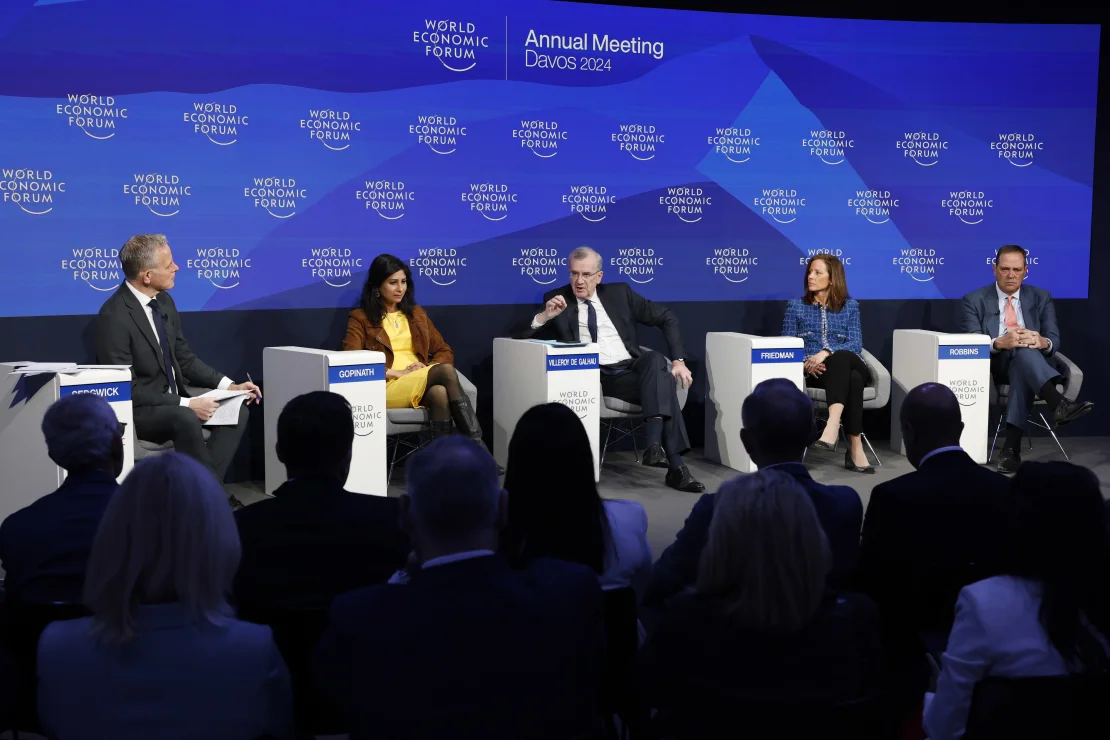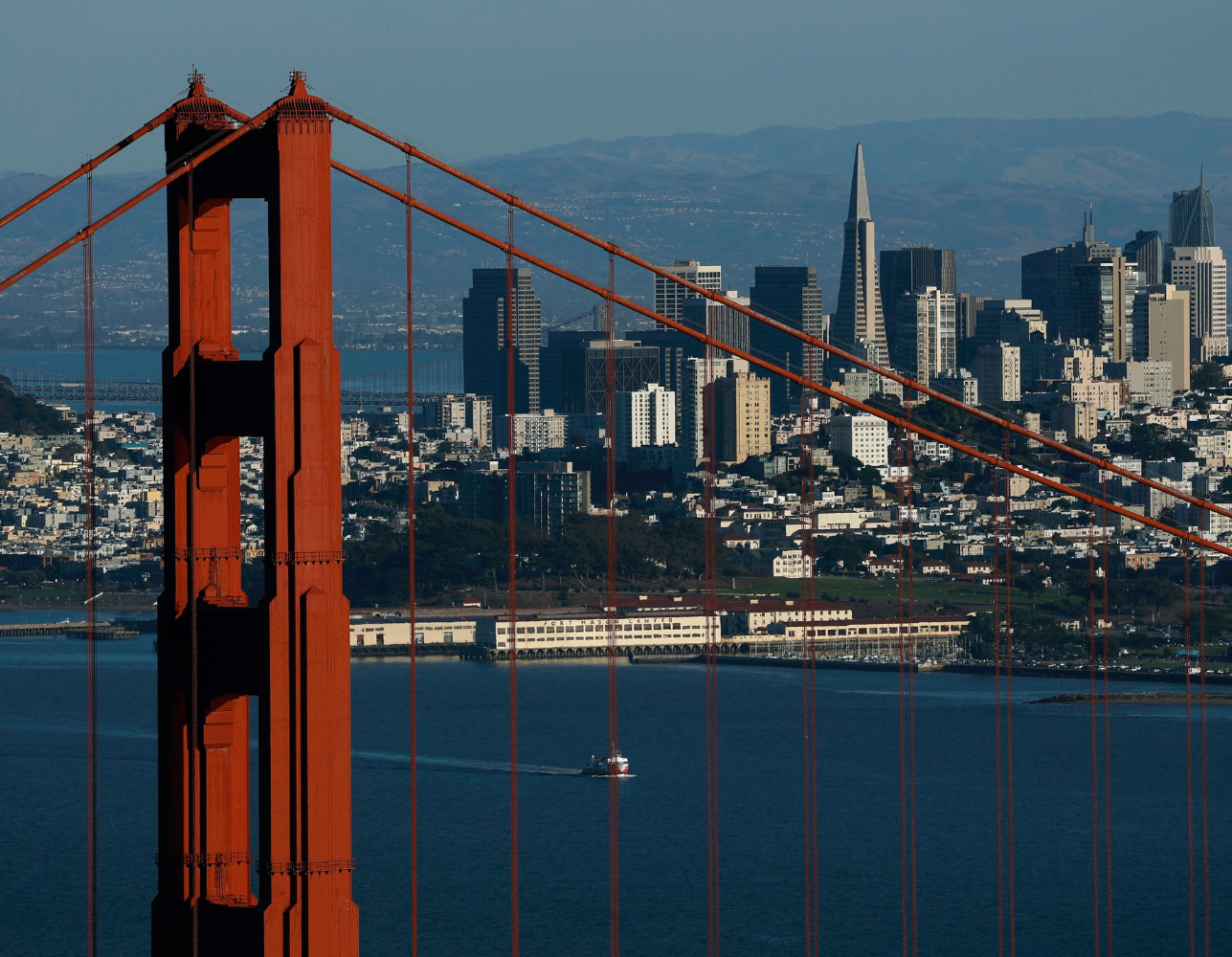Inflation in the US and other major economies has slowed sharply over the past year as energy prices retreated from record highs.
Yet the battle to tame rising prices is not yet won, and the risk that inflation could spike again is growing as disruption to one of the world’s main trade routes persists.
Attacks by Iran-backed Houthi militants in the Red Sea mean many container ships, oil tankers and bulk carriers, which transport raw materials, have been forced to take a longer route around Africa, sending shipping and insurance costs through the roof.
“I do think that there is a level of complacency in the financial markets in respect of the inflation outlook,” UBS CEO Sergio Ermotti said Wednesday at the World Economic Forum in Davos, Switzerland, citing higher shipping costs caused by assaults in the Red Sea, which were likely to translate into higher costs for goods.
“I can’t imagine inflation won’t suffer from that,” he said.
Even before the surge in freight rates had time to feed through to consumer prices, headline inflation ticked higher in the United States, Europe and the United Kingdom in December. The moves upward highlight that getting inflation back down to 2% — the rate targeted by the Federal Reserve and other big central banks — may not be plain sailing.
“It’s too early to declare victory (over inflation). The job is not yet done,” François Villeroy de Galhau, the governor of France’s central bank, said this week in Davos.
His comments echoed those of Gita Gopinath, deputy managing director of the International Monetary Fund. She noted that markets were expecting central banks to switch from raising rates at pace to cutting them “pretty aggressively.”
“I think that’s a bit premature, to (draw) that conclusion,” she said.
Gita Gopinath (second from left) and Francois Villeroy de Galhau (center) both stressed this week that the job of reining in inflation was “not yet done.”Stefan Wermuth/Bloomberg/Getty Images
At the annual gathering in the snowy Alpine ski resort, several bankers and CEOs cautioned policymakers against cutting interest rates too soon, given a multitude of forces that could drive inflation higher.
Those “upside risks to inflation” include supply chain fragmentation, trade protectionism, climate shocks and armed conflicts, according to Gopinath.
Mary Callahan Erdoes, the CEO of JPMorgan Chase’s asset and wealth management unit, warned of another, subtler risk. As soon as central banks start lowering interest rates “people feel better, they start spending more,” she said. “You can have more inflation, instantaneously.”
In Europe and the United States, central bank officials themselves have been pushing back against the prevailing view among traders that rate cuts are imminent.
European Central Bank President Christine Lagarde said Wednesday that the bank would likely cut rates only in the summer but that “there is still a level of uncertainty.”
“I’m confident that short of another major shock we have reached a peak (in interest rates),” she told Bloomberg TV. Now the bank has to keep interest rates high “for as long as necessary” to put inflation firmly on the path back to 2%, she added.
Yet another jolt to inflation could come from widening violence in the oil-producing Middle East, where tensions are running high as the Israel-Hamas war rages.
In recent days, Iran and Pakistan have conducted strikes on each other’s territories in an unprecedented escalation of hostilities between the neighbors. And last week, US and British forces struck more than 60 Houthi targets in Yemen in what President Joe Biden said was a direct response to the threat posed to the “freedom of navigation” in the Red Sea and adjoining Suez Canal.
Despite the conflicts, oil and gasoline prices have barely budged — and natural gas prices have fallen — as weaker demand and plentiful supply supersede geopolitical concerns.
While a potential spike in energy prices is by far the biggest risk to inflation, shipping delays and a sustained rise in freight costs could also pose problems.
Daily traffic through the Suez Canal has tumbled to the lowest level since March 2021 when the canal was blocked by a vessel called the Ever Given for six days, according to PortWatch, a platform set up by the IMF and Oxford University.
Meanwhile, container shipping costs along many of the world’s busiest trade routes have doubled — and in some cases tripled — since the middle of December, according to data from London-based shipping consultancy Drewry.
Although those costs are a small component of the price consumers ultimately pay for manufactured goods, if they remain elevated, they could cause global inflation to rise slightly, according to Oxford Economics.
The disruption in the Suez Canal could last at least another month, Maersk CEO Vincent Clerc warned this week. “The longer this is going to last, the more this is going to cost,” he told CNN’s Richard Quest in Davos.
The shipping delays and the rise in costs could be exacerbated by a potential shortage of containers. DHL CEO Tobias Meyer said in Davos this week that longer journeys around Africa could, for example, lead to a shortage of containers in Asia in a couple of weeks’ time “because that backflow is currently not happening at the pace people were planning for.”




